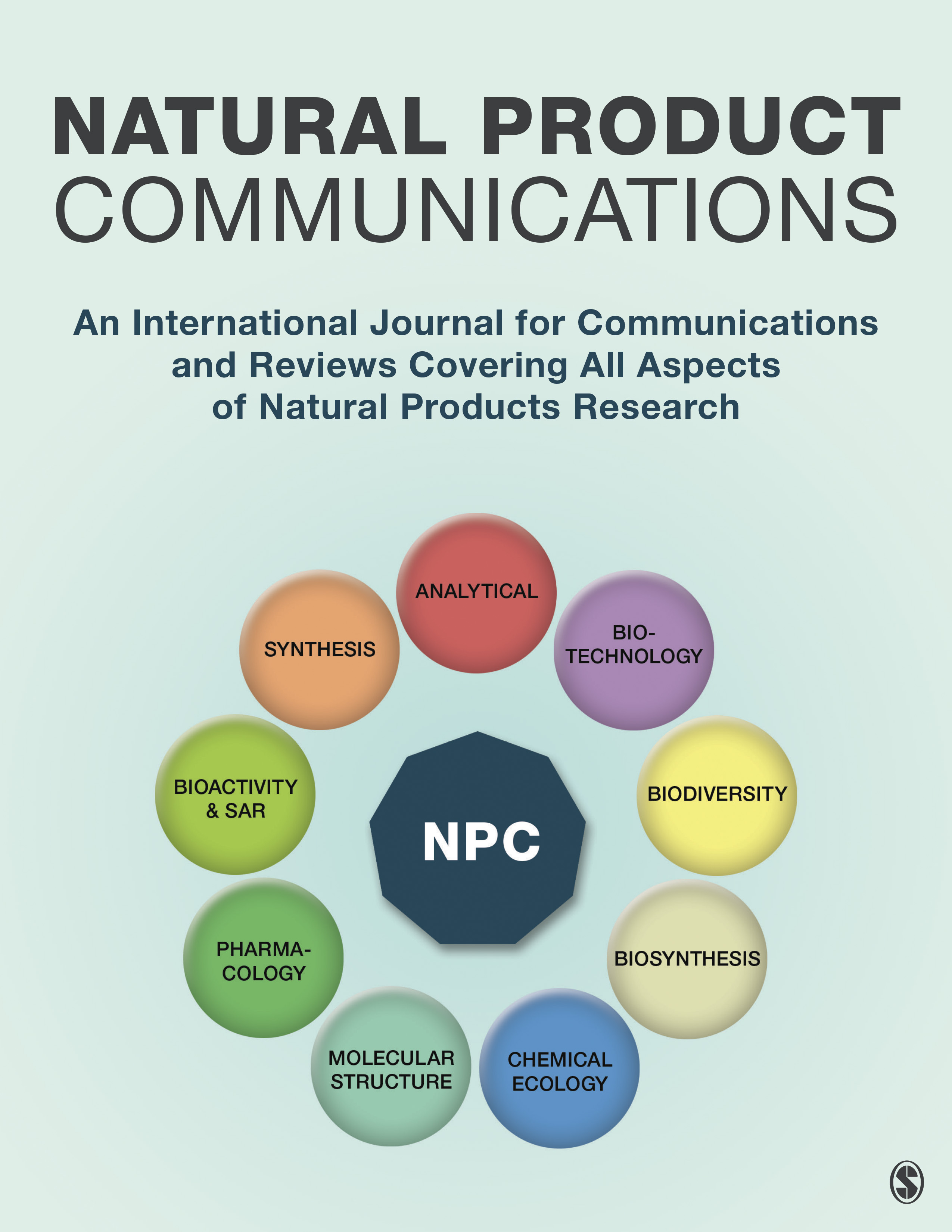Ver ítem
- xmlui.general.dspace_homeCentros Regionales y EEAsCentro Regional Tucumán - Santiago del EsteroEEA FamailláArtículos científicosxmlui.ArtifactBrowser.ItemViewer.trail
- Inicio
- Centros Regionales y EEAs
- Centro Regional Tucumán - Santiago del Estero
- EEA Famaillá
- Artículos científicos
- Ver ítem
Chalcones in Bioactive Argentine Propolis Collected in Arid Environments
Resumen
The aim of this study was to assess the chemical and biological profile of propolis samples collected in arid environments of north-western Argentina. The samples were from two phytogeographical regions (Prepuna and Monte de Catamarca Province). Propolis ethanolic extracts (PEE) and chloroform (CHL), hexane (HEX) and aqueous (AQ) sub-extracts of samples from three regions (CAT-I; CAT-II and CAT-III) were obtained. All PEE exhibited antioxidant activity in
[ver mas...]
The aim of this study was to assess the chemical and biological profile of propolis samples collected in arid environments of north-western Argentina. The samples were from two phytogeographical regions (Prepuna and Monte de Catamarca Province). Propolis ethanolic extracts (PEE) and chloroform (CHL), hexane (HEX) and aqueous (AQ) sub-extracts of samples from three regions (CAT-I; CAT-II and CAT-III) were obtained. All PEE exhibited antioxidant activity in the DPPH radical scavenging assay (SC50 values between 28 and 43 μg DW/mL). The CHL extract was the most active (SC50 values between 10 and 37 μg DW/mL). The antioxidant activity in the β-carotene bleaching assays was more effective for PEE and CHL (IC50 values between 2 and 9 μg DW/mL, respectively). A similar pattern was observed for antibacterial activity. The highest inhibitory effect on the growth of human Gram-positive bacteria was observed for CHL-III and CHL-I (Monte region) with minimal inhibitory concentration values (MIC100) of 50 to 100 μg DW/mL. Nine compounds were identified by HPLC-PAD. Two of them (2′,4′-dihydroxychalcone and 2′,4′- dihydroxy 3′-methoxychalcone) were found only in propolis samples from the Monte phytogeographical region. We consider that the Argentine arid region is appropriate to place hives in order to obtain propolis of excellent quality because the dominant life forms in that environment are shrubby species that produce resinous exudates with a high content of chalcones, flavones and flavonols.
[Cerrar]

Autor
Solórzano, Eliana;
Vera, Nancy Roxana;
Cuello, Ana Soledad;
Ordóñez, Roxana Mabel;
Zampini, Iris Catiana;
Maldonado, Luis Maria;
Bedascarrasbure, Enrique Luciano;
Isla, María Inés;
Fuente
Natural Product Communications 7 (7) : 879-882 (July 2012)
Fecha
2012-07
Editorial
Sage Publishing
ISSN
1934-578X
1555-9475
1555-9475
Formato
pdf
Tipo de documento
artículo
Palabras Claves
Derechos de acceso
Abierto
 Excepto donde se diga explicitamente, este item se publica bajo la siguiente descripción: Creative Commons Attribution-NonCommercial-ShareAlike 2.5 Unported (CC BY-NC-SA 2.5)
Excepto donde se diga explicitamente, este item se publica bajo la siguiente descripción: Creative Commons Attribution-NonCommercial-ShareAlike 2.5 Unported (CC BY-NC-SA 2.5)


